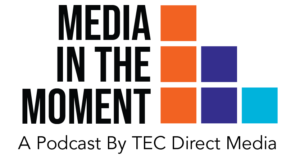Testing Strategies for Online Ad Optimization
Online advertising stands as a cornerstone in the digital marketing strategy for countless businesses, offering a pathway to heightened visibility, engagement, and conversions.
In this article, we will cover the methodologies of online ad optimization, focusing on A/B testing, multivariate testing, and ad rotation—three pivotal strategies that can significantly amplify ad performance, thereby boosting conversion rates and ROI.

What is Online Ad Optimization?
At its core, online ad optimization is the process of fine-tuning your advertising to maximize performance and efficiency.
The digital landscape is vast and varied, making the visibility of your ads crucial to capturing the attention of potential customers.
However, visibility alone is not enough. It’s about engaging these potential customers in a way that resonates with them, compelling them to take the action you desire—be it making a purchase, signing up for a newsletter, or any other conversion goal you’ve set. The primary objectives of online ad optimization are multifaceted and interconnected:
Enhance Visibility: This involves ensuring your ads are seen by as many people as possible but not just any people. The focus is on targeting those who are most likely to be interested in what you’re offering. This requires an understanding of your audience, the use of targeted keywords, and strategic bidding for ad placements.
Engage Potential Customers: Once your ad has caught the eye of a potential customer, the next step is to engage them. This means creating ad content that speaks directly to their needs, interests, and pain points. It’s about making your ad so relevant and compelling that the viewer cannot help but want to learn more.
Convert Interest into Action: The ultimate goal of online ad optimization is to convert this engaged interest into tangible action. This could be a product purchase, a sign-up, a download, or any other action that contributes to your business objectives. Conversion optimization involves fine-tuning your landing pages, call-to-action (CTA) buttons, and the overall user experience to minimize friction and encourage the desired action.
The effectiveness of these efforts is measurable through Key Performance Indicators (KPIs), which provide concrete data on how well your ads are performing. These KPIs include:
- Click-Through Rates (CTR): This metric measures the percentage of people who click on your ad after seeing it. A high CTR indicates that your ad is relevant and engaging to your target audience.
- Conversion Rates: This measures the percentage of clicks that result in the desired action (e.g., sales, sign-ups). It’s a direct indicator of how effectively your ad and landing page are at converting interest into action.
- Return on Investment (ROI): Perhaps the most critical metric, ROI measures the profitability of your ad campaigns. It tells you whether the money you’re spending on advertising is generating a positive return in terms of revenue.
When you closely monitor these KPIs and continuously refine your ad campaigns based on the insights they provide, you can significantly enhance the performance and efficiency of your online advertising efforts.
It’s a dynamic process that requires constant learning and adaptation, but with persistence and a strategic approach, the rewards in terms of increased visibility, engagement, and conversions can be substantial.

A/B Testing
A/B testing is an indispensable technique used in online ad optimization. This approach involves presenting two variations of an ad—labelled as version A and version B—to a segmented audience to see which one performs better based on predefined metrics such as click-through rates (CTR) and conversion rates.
The essence of A/B testing lies in its simplicity and its power to provide clear, actionable insights that directly impact the effectiveness of your advertising campaigns.
Fundamentals of A/B Testing
The process of A/B testing starts with identifying a specific element of your ad you want to test. This could be anything from the ad headline, image, call-to-action (CTA), ad copy, or even the color scheme. Once you’ve decided on the element to test, you create two versions of the ad: one with the original version (the control) and one with a variation (the experiment).
These ads are then shown to two similarly sized and demographically similar audiences over a set period. The performance of each ad version is meticulously monitored and analyzed, focusing on key metrics that align with the campaign’s objectives, such as CTRs, conversion rates, and overall engagement.
Benefits of A/B Testing
The advantages of implementing A/B testing in your ad campaigns are extensive and compelling:
- Data-Driven Decisions: A/B testing removes guesswork from the equation, allowing advertisers to make informed decisions based on actual user behavior and preferences.
- Improved CTRs and Conversion Rates: By pinpointing which ad elements resonate most with your audience, A/B testing can lead to significant improvements in both click-through and conversion rates, directly impacting the campaign’s ROI.
- Enhanced User Experience: A/B testing not only helps optimize ad performance but also contributes to a better overall user experience by ensuring that the content is relevant and appealing to the audience.
- Cost Efficiency: By identifying the most effective elements of an ad campaign through A/B testing, advertisers can allocate their budgets more efficiently, focusing resources on strategies proven to yield the best results.
- Risk Mitigation: Making changes to ad campaigns can be risky, especially when done without concrete data to support those changes. A/B testing allows for small-scale testing of changes to mitigate risk, providing a safety net before a full-scale rollout.
Multivariate Testing: Optimizing Multiple Elements
Multivariate testing is a more advanced and comprehensive approach to online ad optimization. While A/B testing offers invaluable insights into the effectiveness of two versions of a single element, multivariate testing takes this a step further by allowing advertisers to evaluate how different elements of an ad interact with each other and affect the overall performance.
This method is invaluable in scenarios where the synergy between various components—such as headlines, images, call-to-actions (CTAs), and ad copy—plays a critical role in capturing the audience’s attention and driving conversions.
What is Multivariate Testing?
Multivariate testing involves creating multiple variations of an ad by changing several elements simultaneously. For instance, an advertiser could test different combinations of headlines, images, and CTAs within the same ad to see which combination produces the best results in terms of engagement and conversions.
This method requires a systematic approach to design and execution, as the number of variations can grow exponentially with the addition of each new element to the test.
The process typically involves:
- Identifying the Elements to Test: Deciding which parts of the ad will be varied. This could include visual elements, text, layout, or interactive components.
- Creating Variations: Developing different versions of these elements to be tested against each other.
- Executing the Test: Running the ad variations simultaneously to a segmented audience to ensure the results are influenced only by the variations in the ad and not by external factors.
- Analyzing the Data: Using statistical tools to determine which combination of elements performed the best based on predefined KPIs.
The Advantages of Multivariate Testing
The benefits of employing multivariate testing in your advertising strategy include:
- Deep Insights into Element Interactions: Multivariate testing illuminates how different ad elements interact with each other, offering a nuanced understanding of what drives audience engagement and conversions.
- Optimization of Ad Elements: By testing multiple variations, advertisers can identify the most effective combination of elements, leading to higher performance ads.
- Efficient Use of Resources: Though initially resource-intensive, multivariate testing can ultimately save time and money by identifying the most effective ad variations before a full-scale launch.
- Informed Creative Decisions: Insights from multivariate tests can guide creative decisions, ensuring that future ads are designed with an evidence-based understanding of what appeals to the audience.

Ad Rotation Strategies: Enhancing Diversity
Ad rotation is a pivotal strategy in digital advertising, designed to keep your audience engaged and responsive over extended periods. By cycling through different ad creatives, advertisers can mitigate the risk of ad fatigue—a scenario where users become so accustomed to seeing the same ad that they start ignoring it altogether.
Ad rotation also serves as a critical testing ground for identifying the most effective ad creatives, leading to more successful campaigns.
Let’s delve deeper into the nuances of ad rotation strategies and their benefits:
Enhancing Engagement Through Diversity
The primary aim of ad rotation is to maintain user interest and engagement. When users encounter different ads over time, the novelty can capture their attention anew, potentially increasing the chances of interaction and conversion.
This strategy ensures that your messaging remains fresh and relevant, adapting to the evolving interests and preferences of your target audience.
Testing and Optimization
Ad rotation is not just about combating ad fatigue; it’s also an invaluable tool for testing the effectiveness of various ad creatives. By rotating ads, advertisers can gather data on which versions perform best in terms of key performance indicators (KPIs) like click-through rates (CTR), conversion rates, and overall engagement.
This empirical approach allows for data-driven decisions, optimizing ad creatives based on actual performance rather than assumptions.
Algorithms for Ad Rotation
Implementing ad rotation involves choosing from several algorithms, each designed to meet different campaign objectives:
Even Distribution Algorithm
The even distribution algorithm allocates impressions equally among all ads in the rotation. This equitable approach is particularly useful for A/B testing or when you want to compare the performance of ad creatives directly. By ensuring each ad gets a fair share of visibility, advertisers can make unbiased assessments of their effectiveness.
- Benefits: Simplifies performance comparison; ideal for testing new creatives.
- Best for: Initial testing phases, small-scale campaigns.
Optimized Rotation Algorithm
Optimized rotation uses performance data to prioritize the display of ads that are performing better. This dynamic approach adjusts in real-time, ensuring that the most effective ads are shown more frequently.
- Benefits: Increases overall campaign efficiency by focusing on high-performing ads; adapts to real-time performance data.
- Best for: Ongoing campaigns where initial data indicates clear performance leaders.
Custom Rotation Strategies
Beyond these standard algorithms, advertisers can employ custom rotation strategies tailored to specific campaign goals.
For example, sequential rotation can unveil a narrative over a series of ads, while weighted rotation allows for prioritizing certain ads without excluding others entirely.
- Benefits: Offers flexibility and customization to align with unique campaign narratives or objectives.
- Best for: Brand awareness campaigns, storytelling, or when certain ads need to be prioritized due to strategic considerations.

The Future of Ad Optimization Strategies
The future of ad optimization strategies is poised to be shaped by rapid advancements in technology, shifts in consumer behavior, and an ever-evolving digital landscape.
As we look ahead, several key trends and innovations are expected to redefine how advertisers approach ad optimization, making strategies more efficient, targeted, and effective. Here’s an exploration into the future of ad optimization:
Artificial Intelligence and Machine Learning
Artificial Intelligence (AI) and Machine Learning (ML) are at the forefront of transforming ad optimization strategies. These technologies enable sophisticated predictive analytics, audience segmentation, and automated decision-making processes.
Advertisers can expect AI-driven platforms to provide deeper insights into consumer behavior, predicting trends and user responses with high accuracy. This will allow for the creation of highly personalized ad campaigns that resonate with individual preferences and needs, significantly improving engagement and conversion rates.
- Personalization at Scale: AI and ML will facilitate unprecedented levels of personalization, tailoring ad content to individual users in real-time based on their interactions, preferences, and behaviors.
- Dynamic Content Creation: Machine learning algorithms will assist in generating dynamic ad content, automatically adjusting messaging, imagery, and calls to action to match the audience’s predicted preferences, maximizing relevance and impact.
Increased Use of Augmented Reality (AR) and Virtual Reality (VR)
Augmented Reality (AR) and Virtual Reality (VR) are set to revolutionize the ad experience by offering immersive and interactive ways for consumers to engage with brands.
Advertisers will leverage these technologies to create captivating ad campaigns that go beyond traditional visuals, allowing users to experience products or services in a virtual environment.
This immersive approach will enhance user engagement and provide valuable insights into consumer preferences and behavior.
- Virtual Try-Ons and Product Demos: AR and VR will enable consumers to virtually try on clothes or see how furniture looks in their home before making a purchase, dramatically enhancing the online shopping experience.
- Immersive Brand Experiences: Brands will create VR environments or AR experiences that engage users in interactive narratives, building stronger emotional connections and brand loyalty.
Voice and Conversational Marketing
As voice-assisted devices continue to proliferate, voice search optimization and conversational marketing will become integral components of ad optimization strategies.
Advertisers will need to adapt to this shift by optimizing content for voice search and leveraging conversational AI to engage users through chatbots and voice assistants.
- Optimizing for Voice Search: Advertisers will focus on long-tail keywords and natural language to align with how people use voice search, ensuring visibility in voice search results.
- Personalized Conversations at Scale: AI-driven chatbots and voice assistants will deliver personalized marketing messages and product recommendations through natural, conversational interactions, enhancing the customer experience.
Conclusion
Continuous optimization is the linchpin of success in digital advertising. By embracing data-driven testing approaches and adapting them, advertisers can stay competitive and achieve sustained success.
The dynamic nature of ad optimization requires ongoing learning and adaptation, but with a strategic approach, the rewards can be substantial.

ready to discuss your campaign?
FAQs
What is online ad optimization?
Online ad optimization is the process of fine-tuning advertising efforts to maximize performance and efficiency, involving visibility enhancement, customer engagement, and conversion optimization.
Why is online ad optimization important?
It's crucial for increasing visibility, engaging potential customers, converting interest into action, and improving overall ROI by using targeted strategies.
What are the primary objectives of online ad optimization?
The main goals are to enhance ad visibility to the right audience, engage potential customers with compelling content, and convert their interest into actionable results.
How is the success of online ad optimization measured?
Success is measured using Key Performance Indicators (KPIs) like Click-Through Rates (CTR), Conversion Rates, and Return on Investment (ROI).
What is A/B testing in online advertising?
A/B testing, or split testing, involves comparing two versions of an ad to see which performs better based on metrics like CTR and conversion rates.
How does multivariate testing differ from A/B testing?
Multivariate testing evaluates multiple elements simultaneously to see how variations interact, offering deeper insights into optimizing ad performance.
What are the benefits of A/B testing?
Benefits include making data-driven decisions, improving CTRs and conversion rates, enhancing user experience, and achieving cost efficiency.



